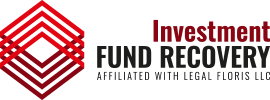Is credit card fraud protected?
The main providers of global card services are VISA and MasterCard. These cards enable financial transactions via terminal payments, cash withdrawals and internet purchases. Such cards are funded via positive balances, overdrafts, or credit facilities belonging to the user. Charges include among others, annual fees, transaction fees, and currency conversion fees. The global acceptance of transacting via the internet and the virtual world that accepts internet payments, furthers different types of online transactions. From another point of view, automated teller machines replace physical bank tellers. Both examples given show vulnerabilities for abuse and fraud by the user and against the user.
Credit card fraud may be connected with sophisticated financial crime. In particular where it comes to cloned websites, fabricated algorithms and opaque computer models, card users can be misguided and even defrauded. Depending on the sophistication of the fraud against the card owner, the card issuer decides on the level of protection and responsibility involved. As such, credit card fraud can either be fully protected or disclaimed at the expense of the card user. It is therefore important to mitigate risk and keep the outflow of potential fraudulent transactions to the bare minimum.
Victims of credit card fraud should act immediately when they are aware of fraud taking place, or see that abuse was successful. Card issuers often require instant notifications to indemnify their customers against financial losses. Also, when the issuer does not provide any coverage, risk mitigation is recommended to limit the inconvenient personal losses. Actions include reporting to the bank and in matters of fraud the local police. A copy of the police statement is often needed to support evidence for a claim to repay.
Where the case ends up in a criminal court, victims can often file a civil claim against the wrongdoer. Due to the size of the misappropriated funds, most money often disappeared already. Clawback and compensation therewith often gets difficult. As such, the initial line of recovery is often the card issuer who can follow up on misconduct against the wrongdoer while compensating the user for actual and direct damages.
In the event that the card issuer and the wrongdoer provide no recourse, the personal insurance of the victim may provide protection. Insurance policies protect and hedge the risk of damage or financial loss. Since insurers are commercial enterprises, they will only compensate damages that are the result of unforeseen events where the insured person has no blame whatsoever to the actual loss.
